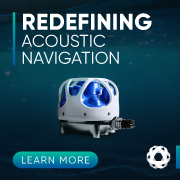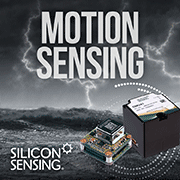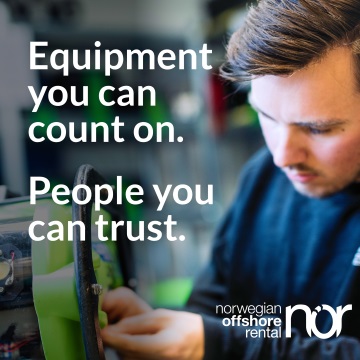
SeaCAT: Cost-Effective and Low Environmental Impact Unmanned Inspection Solution for Offshore MRE Infrastructures
12.05.2022
To carry out unmanned inspection missions on offshore wind farms and more generally for all offshore infrastructures, Subsea Tech has developed the SeaCAT.
SeaCAT is a multi-drone solution combining a surface drone (USV - Unmanned Surface Vehicle), an underwater robot (ROV - Remotely Operated Vehicle) and an aerial drone (UAV - Unmanned Aerial Vehicle) for the inspection of structures from the foundations to the tip of the blades.
A unique piloting interface is proposed for the whole system in order to offer to the operators ideal ergonomics and comfort during long and tedious operations.
A broadband Wi-Fi antenna located on the USV allows managing in real time the telemetry of the whole system as well as the transfer of data (video and other sensors such as sonar, probes, etc.) between the SeaCAT and the control station. Communication with the USV is ensured by an onshore Wi-Fi antenna (up to 10 km range) or via the Wi-Fi network of the offshore wind farm or the mother ship.
The overall autonomy of the SeaCAT, up to 7 days, is ensured by an onboard diesel generator. The generator provides the necessary power for the outboard electric motors as well as for the electronics and the various sensors and accessories of the platform.
On the water…
The USV SeaCAT has been specially developed for open sea operations and difficult operational conditions. With an overall length of 6.83m and a weight of approximately 1 ton, its robust catamaran-type aluminium structure, completed by 2 inflatable lateral bladders, ensures excellent stability and high resistance to shocks. Its 2 powerful unidirectional thrusters allow reaching a speed of 6 knots and operating the USV up to sea state 4 (6 in transit phases).
The USV is equipped as standard with 2 PTZ 360° video cameras giving a real-time feedback of the SeaCAT environment. To ensure its safety as well as that of the mobile and fixed structures surrounding it, the SeaCAT is equipped with an AIS (Automatic Identification System) and may optionally embed an automatic obstacle avoidance software.
Thanks to a payload capacity of 500kg, many underwater sensors may be integrated for the implementation of various survey missions: bathymetry, scouring control on piles/foundations, cable laying and TDP monitoring, search for buried cables, etc.
*Multibeam bathymetry sonars for 3D modelling of the seabed and structures
*Side scan sonars for seabed survey, cable tracking, etc.
*Magnetometer / Sub-bottom Profiler for the search of buried cables
*Imaging sonar for obstacle avoidance, object search, etc.
…underwater…
The SeaCAT is equipped with an electric winch for launching the Tortuga ROV, which allows the operator performing video/sonar inspection missions on structures: piles, anodes, floats, anchor chains, foundations, etc. The ROV may also be fitted with various probes for NDT (Non-Destructive Testing) missions on structures:
*Thickness measurement probe (metals)
*Probe for measuring cathodic protection potential (CP)
*Probe for detecting water intrusion in metal tubes (FMD - Flooded Member Detection)
*Laser defect measurement tool
When cleaning operations prior to NDT are necessary (to remove marine growths and biofouling), the Tortuga may also be equipped with a cavitation cleaning lance or a rotating brush.
Finally, the 3D photogrammetry system HYDRO300 (developed by IVM Technologies) may also be integrated on the Tortuga ROV in order to perform dimensional control on structures with a sub-millimeter resolution.

Tortuga ready to be deployed

Wind turbine underwater inspection - CP probe

Tortuga equipped with the IVM Technologies photogrammetry system
And in the air !
A DJI Matrice RTK UAV is the last element of the platform. A winch operated cable allows keeping a physical link between the USV and the UAV and ensures the power supply of the latter. The use of a tethered UAV thus allows increasing considerably its autonomy, this last one not being limited anymore by the capacity of its batteries, and reducing the risk of equipment loss. The winch also eases the landing phase during operations in harsh weather conditions (strong wind, etc.). The UAV makes it possible to inspect all the out-of-water parts of the wind turbines, especially the mast and the blades, always from the same control post on land.
The benefits
The use of SeaCAT offers multiple benefits:
*Cost-effective solution: 4 to 5 times less expensive, including personnel (for 24/24 operations) than conventional means. Optimized and controlled mob/demob costs thanks to 20' container transport.
*Reduced environmental impact: consumption of about 100L/day of diesel fuel VS 2 to 5 tons/day for conventional means. Reduction of CO2 emissions by a factor between 20 and 50!
*Operator safety: by using unmanned means, SeaCAT offers a risk-free solution for operators who can remotely control all operations.
*Infrastructure safety: due to its light weight and its structure protected by inflatable tubes, the SeaCAT represents almost no danger for the inspected infrastructures, unlike conventional vessels which are much heavier and less reactive.
Location: France











